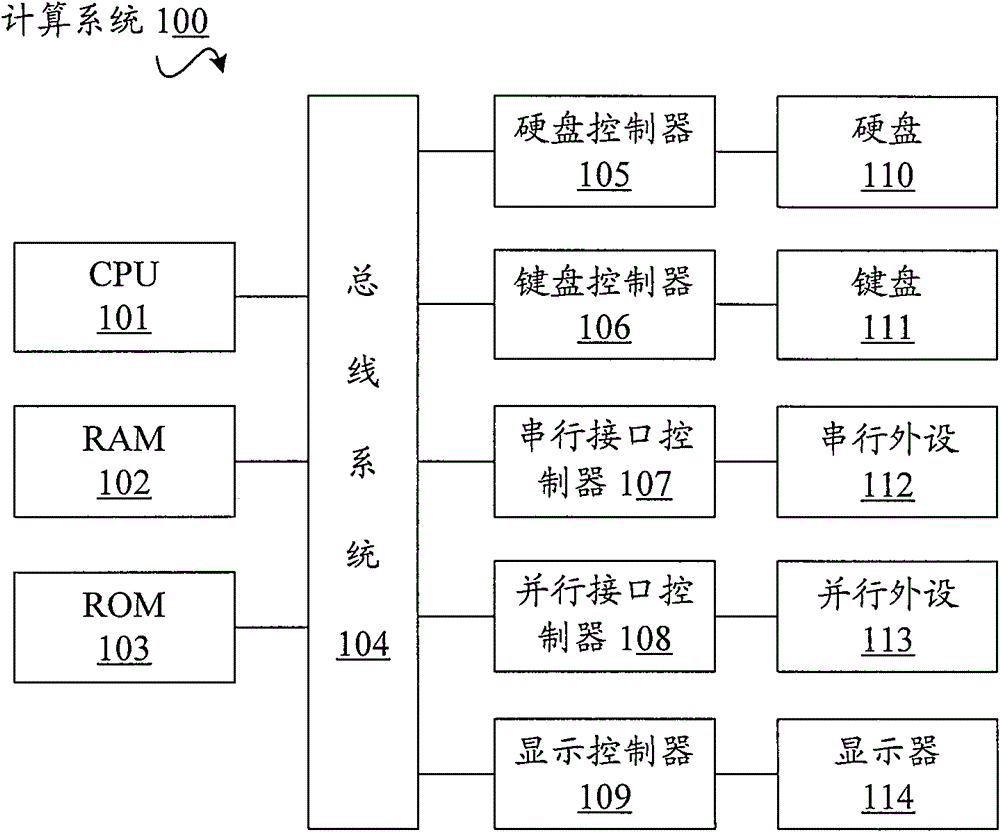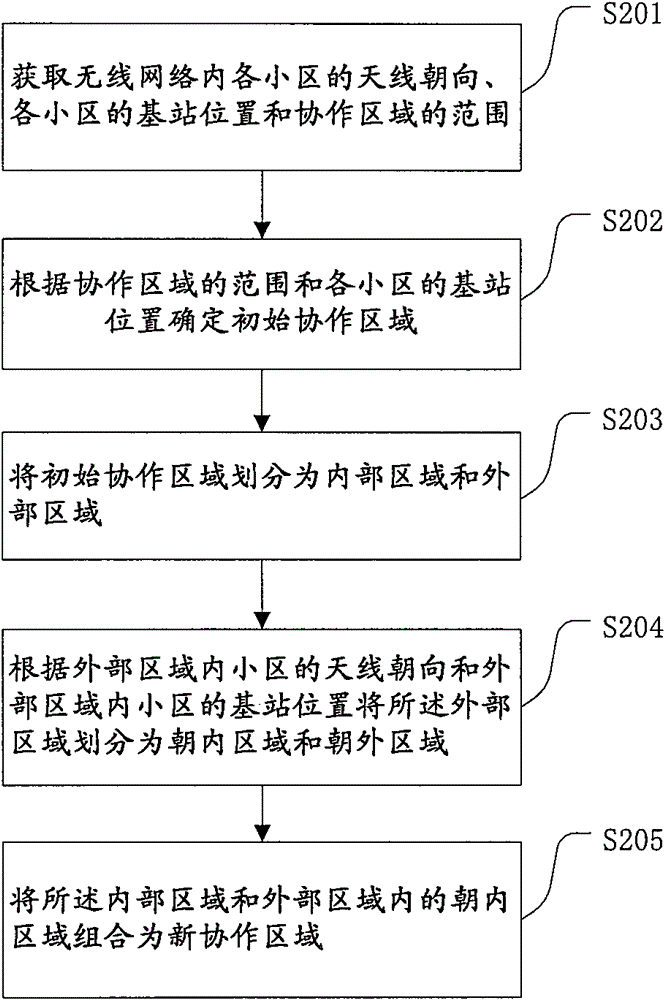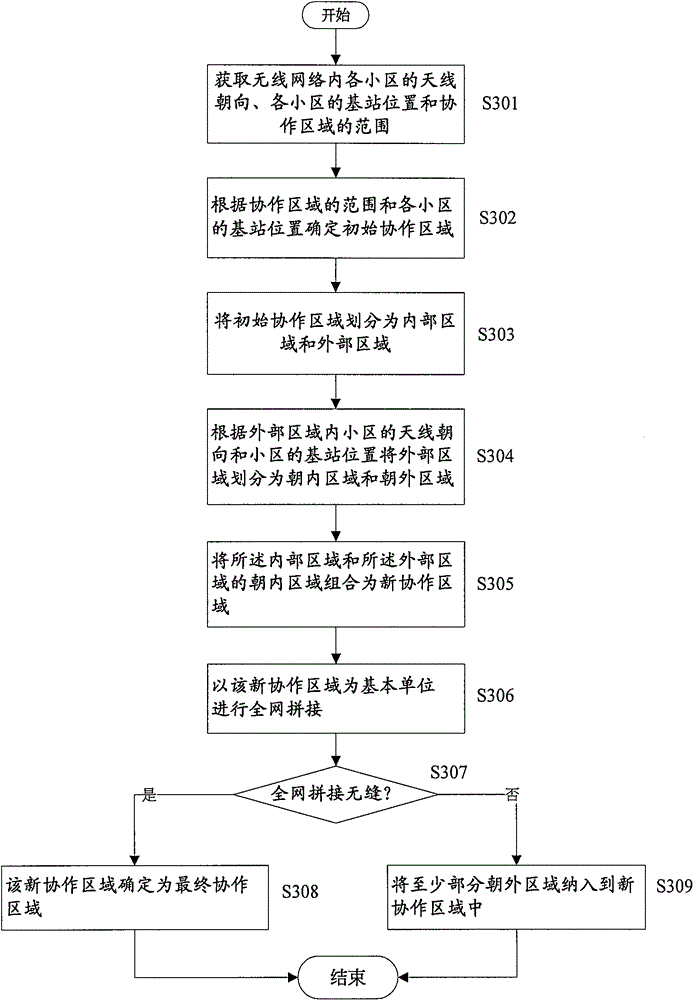A method and device for dividing cooperation areas in a wireless network
A wireless network and regional technology, applied in network planning, wireless communication, electrical components, etc., can solve the problem of scheduling complexity
- Summary
- Abstract
- Description
- Claims
- Application Information
AI Technical Summary
Problems solved by technology
Method used
Image
Examples
no. 1 example
[0036] Figure 4 It shows a schematic diagram of the division of the initial cooperation area according to the first embodiment of the present invention. Seven initial cooperation areas of the entire wireless network are determined according to the scope of the cooperation area and the positions of the base stations of each cell in the wireless network, and the seven initial cooperation areas are respectively Different line types are used for identification. Taking the initial cooperation area in the center as an example, the initial cooperation area is composed of cells 1-19, and cells 1-7 are not adjacent to other initial cooperation areas, so cells 1-7 form the In the internal area of the initial cooperative area, the cells 8-19 are respectively adjacent to other cooperative areas, so the cells 8-19 constitute the external area of the initial collaborative area.
[0037] Figure 5 A schematic diagram showing the division of the outer area according to the first embodim...
no. 2 example
[0041] Image 6 It shows a schematic diagram of the division of initial cooperation areas according to the second embodiment of the present invention. Seven initial cooperation areas are determined according to the scope of the cooperation area and the base stations of each cell in the wireless network, and the seven initial cooperation areas are respectively separated by different lines. In the wireless network of this embodiment, three cells share one base station. Taking the initial cooperation area in the center as an example, the initial cooperation area is composed of cells 1-21, and cells 1-21 are formed by seven base stations. Management control, where cells 1, 2, 3, 8, 13, 21 are not adjacent to other initial cooperation areas, so cells 1, 2, 3, 8, 13, 21 constitute the internal area of the initial cooperation area, cells 4, Cells 5, 6, 7, 9, 10, 11, 12, 14, 15, 16, 17, 18, 19, and 20 are respectively adjacent to other cooperation areas, so cells 4, 5, 6, 7, 9, 10, ...
PUM
 Login to View More
Login to View More Abstract
Description
Claims
Application Information
 Login to View More
Login to View More - R&D
- Intellectual Property
- Life Sciences
- Materials
- Tech Scout
- Unparalleled Data Quality
- Higher Quality Content
- 60% Fewer Hallucinations
Browse by: Latest US Patents, China's latest patents, Technical Efficacy Thesaurus, Application Domain, Technology Topic, Popular Technical Reports.
© 2025 PatSnap. All rights reserved.Legal|Privacy policy|Modern Slavery Act Transparency Statement|Sitemap|About US| Contact US: help@patsnap.com



